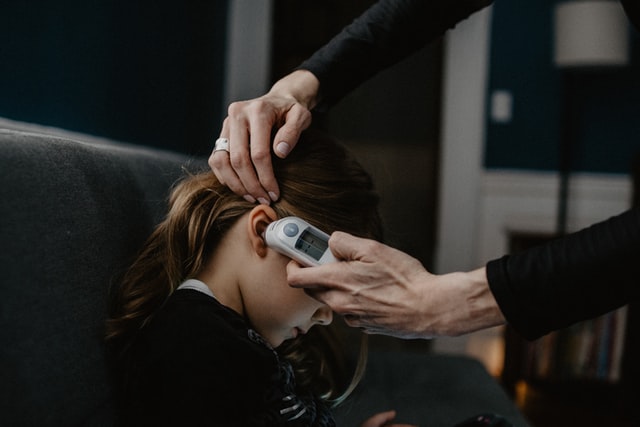
As a parent, it can be worrying when your child has a fever. You start to get anxious about what is causing the fever and whether there is something more serious going on.
Fever and high temperatures are relatively common in children. Most of the time, their temperature should return to a normal reading within a few days. If it persists for more than a week, take your child to see the doctor.
A normal body temperature for young children and babies is around 36.5 to 37.5 degrees Celsius (97.5 to 99.5 degrees Fahrenheit). It can vary naturally throughout the day and can also be impacted by things like physical exercise and food.
However, if your child’s temperature surpasses 38 degrees Celsius (100.4 degrees Fahrenheit), it indicates that there is an infection. Some of the most common infections in children that cause a high temperature are tonsilitis, chickenpox, and influenza.
If your child is complaining of feeling ill or hot, take the following steps.
Check Their Temperature
When your child looks like they have a fever and they feel hot or sweaty, you should check their temperature.
Get a digital thermometer and place it inside their armpit. Press their arm gently down to squeeze the thermometer in place.
Keep the thermometer there for as long as is recommended in the instruction manual. Most digital thermometers beep when they’re ready.
Note down the temperature and compare it to a child fever temperature chart in Australia to determine if it is normal or abnormal. Repeat the measurements every day until their temperature returns to within a healthy range.
Keep Your Child at Home
When your child has a fever and is showing signs of infection, it’s important that you keep them at home. Try and avoid direct contact with others apart from yourself until their temperature returns to normal.
Keep your child at home and inform their teachers that they are ill and won’t be at school for a few days. They are safe to return to school when their temperature drops to a normal level. Meanwhile, you can use at-home interactive learning materials to keep them occupied while they’re sick.
Keep Them Hydrated
Children can often forget to drink water when they feel ill, which can lead to dehydration. If your child becomes dehydrated, it may cause the fever to worsen and slow down their recovery.
Make sure your child drinks plenty of fresh water throughout the day. Keep an eye out for the signs of dehydration, such as dark urine, reduced frequency of urination, feeling dizzy or lightheaded, and dryness around the eyes, nose, and lips.
If you notice any of these signs, encourage your child to drink more fluids. If they don’t like drinking plain water, add some squash to the drink. They can have fruit juice or soft drinks but try to limit these drinks to a maximum of one a day, as they tend to contain a lot of sugar.
Hey welcome to my blog . I am a modern women who love to share any tips on lifestyle, health, travel. Hope you join me in this journey!

Speak Your Mind